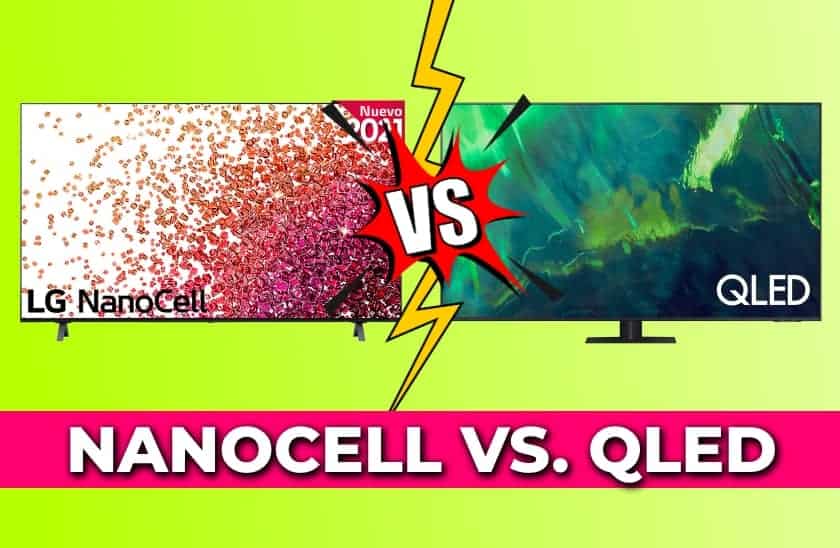
LG NanoCell and Samsung QLED are two leading display technologies that offer exceptional picture quality and advanced features. Both technologies have their unique characteristics, strengths, and considerations. In this article, we will compare LG NanoCell avs Samsung QLED to help you understand the differences and make an informed decision when choosing a premium TV.
LG NanoCell Technology:
LG NanoCell is a display technology that utilizes nano-sized particles to filter out impurities and enhance color accuracy. Key features and considerations include:
a. Picture Quality: LG NanoCell TVs offer vibrant and accurate colors with wide color gamut coverage. The technology reduces color bleed and improves color saturation, resulting in a more lifelike and immersive viewing experience.
b. Wide Viewing Angles: NanoCell TVs provide excellent viewing angles, allowing for consistent color and contrast even when viewed from off-center positions. This makes them ideal for large rooms or situations where multiple viewers are present.
c. Local Dimming: Certain LG NanoCell models feature local dimming technology, which enhances contrast by selectively dimming or brightening specific areas of the screen. This improves black levels and overall picture quality, especially in dark scenes.
d. AI Picture and Sound: LG NanoCell TVs often come equipped with AI-powered features that analyze and optimize picture and sound quality in real-time. These technologies enhance sharpness, reduce noise, and provide immersive audio experiences.
Samsung QLED Technology:
Samsung QLED (Quantum Dot LED) is a display technology that utilizes quantum dots to enhance color reproduction and brightness levels. Key features and considerations include:
a. Color Volume and Brightness: QLED TVs offer exceptional color volume, covering a wide range of colors and producing vivid, vibrant hues. The technology also provides high brightness levels, ensuring excellent performance even in well-lit environments.
b. HDR Performance: Samsung QLED TVs are known for their impressive High Dynamic Range (HDR) performance. They support various HDR formats and can deliver enhanced contrast, brighter highlights, and better shadow detail for a more immersive viewing experience.
c. Quantum Processor: Many Samsung QLED models are equipped with a powerful Quantum Processor, which utilizes AI and machine learning algorithms to upscale content, reduce noise, and optimize picture quality for a sharper and more detailed image.
d. Gaming Features: Samsung QLED TVs often offer gaming-specific features, such as low input lag, variable refresh rate (VRR), and Auto Game Mode. These features ensure smooth gameplay and reduce screen tearing, making them popular among gaming enthusiasts.
Considerations and Differences:
a. Viewing Angles: While both technologies offer wide viewing angles, LG NanoCell generally performs slightly better in maintaining color accuracy and contrast when viewed from off-axis positions.
b. Black Levels and Contrast: Samsung QLED TVs generally have better black levels and contrast ratios, particularly in bright environments. However, LG NanoCell’s local dimming technology can improve black levels in certain models.
c. Color Accuracy: Both technologies offer excellent color accuracy, but LG NanoCell is often praised for its precise color reproduction, especially in darker shades.
d. Gaming Features: Samsung QLED TVs have an edge when it comes to gaming-specific features, offering low input lag and advanced gaming technologies. However, LG NanoCell TVs also provide a good gaming experience overall.
Conclusion:
LG NanoCell and Samsung QLED are both impressive display technologies that offer excellent picture quality and advanced features. LG NanoCell excels in color accuracy, wide viewing angles, and local dimming capabilities. On the other hand, Samsung QLED delivers vibrant colors, high brightness levels, and impressive HDR performance, with a focus on gaming features.
When choosing between LG NanoCell and Samsung QLED, consider your specific requirements, preferences, and budget. It’s recommended to visit a store and compare the TVs side by side, evaluating factors such as color reproduction, black levels, and gaming features to make the best choice for your viewing needs.